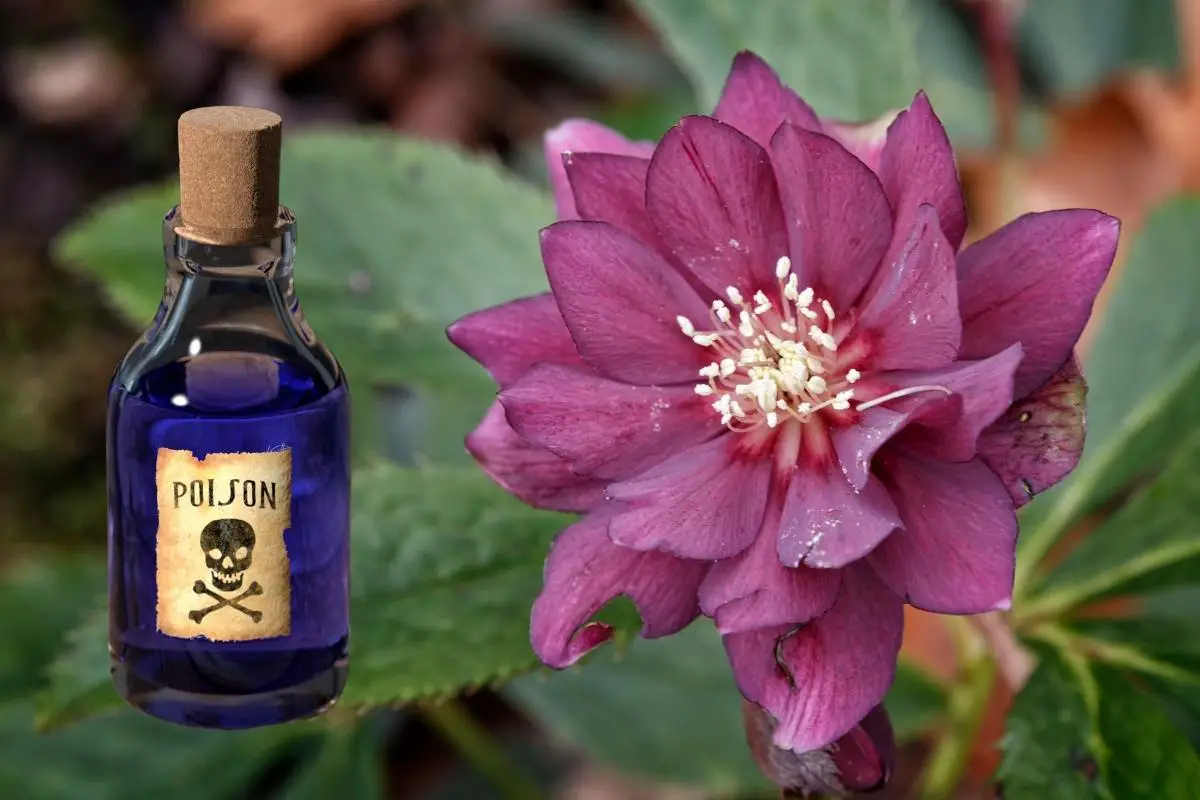Every type of hellebore is considered to be poisonous towards humans and other kinds of animals, including dogs or cats. Understanding how to protect yourself from exposure to hellebores is extremely important, especially if you plan on handling them or planting them in your garden.
Table of Contents
Is Hellebore Poisonous?
Yes, hellebore is poisonous. In some cases, hellebore is poisonous enough to kill you or your pet. Most of the time it will result in you becoming very sick in a very short amount of time after being exposed to any part of the plant. It doesn’t matter if it’s the leaves, roots, or stems, because every part of the plant can distribute its toxic properties to you.
Hellebores carry something known as ‘cardiac glycosides’. These can be especially dangerous for humans because they can create some hazardous side effects. This is especially true if you consume any part of the hellebore plant, but other side effects can also be experienced for simply coming in contact with them.
For the best protection, you should always wear a pair of gloves before exposing yourself to any type of hellebore plant in the wilderness or your garden.
Side Effects From Hellebore Toxins
If you are directly exposed to the toxins within a hellebore plant, there are a couple of symptoms you should keep an eye on. You might become nauseous and feel very sick in the stomach. Dogs and cats may also experience vomiting or diarrhea if they consume any of these toxins.
It is exceptionally important to ensure that you prevent your pets from gaining access to a hellebore plant due to these toxins. You should also spend some time ensuring that you don’t expose yourself to these potentially hazardous side effects. Wearing gloves and taking precautions is always better than risking the chance of being exposed to this poisonous family of plants.
Are All Hellebores Poisonous?
The quick and easy answer is that all hellebores are poisonous. It doesn’t just stop at the leaves either, every part of the hellebore plant is toxic to humans and pets. While it is rare for hellebore poisoning to be fatal, it can indeed kill you in some situations. You should seek immediate assistance from medical professionals if you believe that you have consumed or been exposed to any part of a hellebore plant.
The good news is that most people agree that hellebores taste absolutely awful, making it hard to even consume a small amount. The foul taste generally deters animals and humans from consuming a significant amount that could ultimately be fatal.
Why Are Hellebores Poisonous?
The best way to describe the reasoning for the generated toxins inside of hellebore is that the plant itself develops these toxins to survive. By generating these toxins, insects, humans, and animals will be less likely to harm the plant during its growth. This generally protects against bacteria and insects, but also humans and pets.
It’s safe to have hellebores growing in your garden or even around the house as long as none of your pets or children can gain access to them. It’s generally best to keep them out of the reach of pets whenever possible.
What Are Cardiac Glycosides?
Cardiac glycosides are the main toxin in hellebores that poses a danger to people and pets. This particular toxin includes helleborine, which is known to be a toxic alkaloid that can be found in nearly all hellebore plants.
Consuming hellebore plants with cardiac glycosides can have a wide range of side effects, some of which can be serious enough to directly affect the heart. Breathing problems and skin irritation have also been reported as possible side effects for ingesting cardiac glycosides.
Even though dying from hellebore poisoning is rare, you should never take the chances of being poisoned by this type of toxin. You should take every possible action to keep pets, children, and yourself protected from potential exposure to cardiac glycosides that are found in poisonous hellebores. They can still be a great addition to your garden, but you just need to make sure that safety precautions are handled before you handle them around your property.
History of Hellebore Poisoning
There have been many documented reports of moderate-to-severe side effects relating to the poisonous toxins that are found in hellebores. The roots, leaves, and stems of these plants all contain poisonous toxins that could lead to harm. It has even been speculated that Alexander the Great was poisoned with Hellebores. Source.
It’s worth noting that they were used in some situations to cause vomiting to remove bacteria from humans hundreds of years ago. There’s not really a whole lot of modern usage for hellebore toxins in the environment of medical treatment.
While the reports of human-related poisonings are low, there are a lot more veterinary reports about pets being poisoned by the leaves of hellebore plants. This is why it is so important to prevent pets from gaining access to this harmful perennial plant.
Related Questions
How many people have died from hellebore toxins?
Less than a hundred people are known to have died from hellebore poisoning within the United States in a single year. While it is harmful and may produce negative side effects, it’s still relatively rare to hear of someone dying from hellebore toxins, also known as cardiac glycosides.
How to prevent pets from being poisoned by hellebore plants?
The easiest way to prevent your pets from being exposed to harmful toxins in hellebores is to completely prevent them from accessing the area in which it is planted. If this is not possible, you should have constant supervision of your pets so that they don’t get into any trouble with your hellebores.
Chad Fox also contributed to this article.

